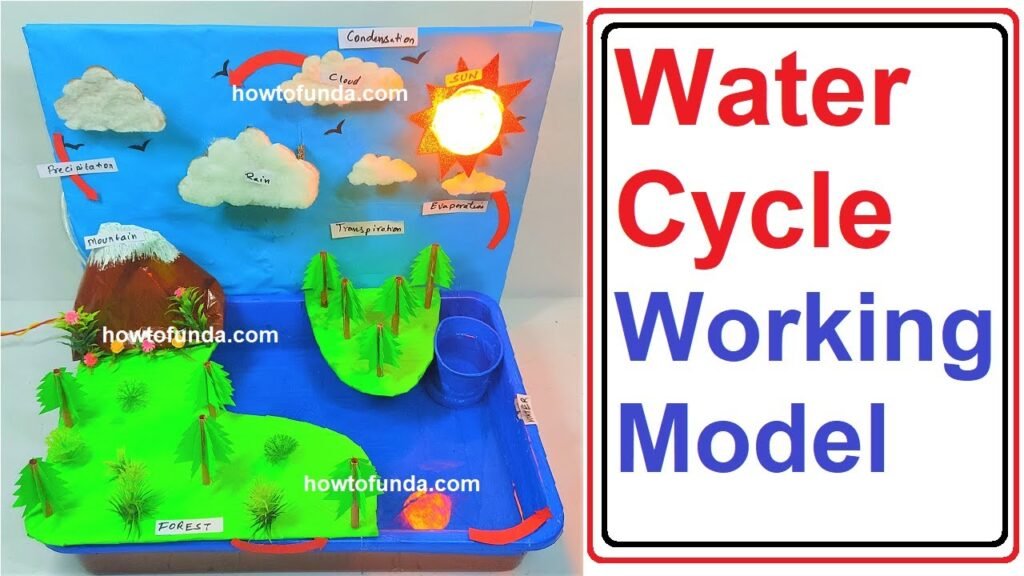Creating an innovative water cycle working model for an Inspire Award science project using a DC water pump, light bulb, and evaporator is a fantastic idea.

Here’s a detailed guide on how to build such a model:
Materials Needed:
- Cardboard sheets
- Colored paper
- DC water pump
- Light bulb or LED lamp
- Evaporator (can be a small bowl or container)
- Small water reservoir or container
- Small plastic tubing
- Plastic or glass container (to collect condensed water)
- Glue or adhesive
- Scissors
- Markers or pens
Step by step video Instructions:
1. Base Construction:
- Start by cutting a large piece of cardboard to serve as the base for your water cycle model. This will provide a stable foundation.
2. Sunlight Simulation:
- Attach a light bulb or LED lamp to one side of the cardboard base using glue or tape. This represents the heat source needed for evaporation in the water cycle.
3. Water Reservoir and Pump System:
- Place a small water reservoir or container at the opposite end of the cardboard base from the light bulb.
- Connect the DC water pump to the water reservoir using small plastic tubing. Ensure that the pump can draw water from the reservoir.
4. Evaporation Chamber:
- Position the evaporator (a small bowl or container) near the light bulb on the cardboard base. This is where water will evaporate.
- Fill the evaporator with water. This water will be heated by the light bulb to simulate evaporation.
5. Condensation Area:
- Place a plastic or glass container near the evaporator. This will collect the condensed water vapor.
6. Decorate and Label:
- Use colored paper to add details and labels to the different components of the model, such as “Sunlight,” “Evaporation,” “Condensation,” and “Precipitation.”
- Decorate the cardboard base with illustrations of clouds, raindrops, and other elements of the water cycle.
7. Assembly and Testing:
- Assemble all the components of the model according to the layout described above.
- Fill the water reservoir with water and turn on the DC water pump to start the water cycle process.
- Observe how the heat from the light bulb causes water to evaporate from the evaporator, condense on the walls of the collection container, and collect as water droplets, simulating the water cycle in nature.
Educational Value:
- Use the model to explain the different stages of the water cycle: evaporation, condensation, and precipitation.
- Discuss the importance of the water cycle in regulating Earth’s climate and supporting life.
- Highlight how human activities can impact the water cycle and the environment.

